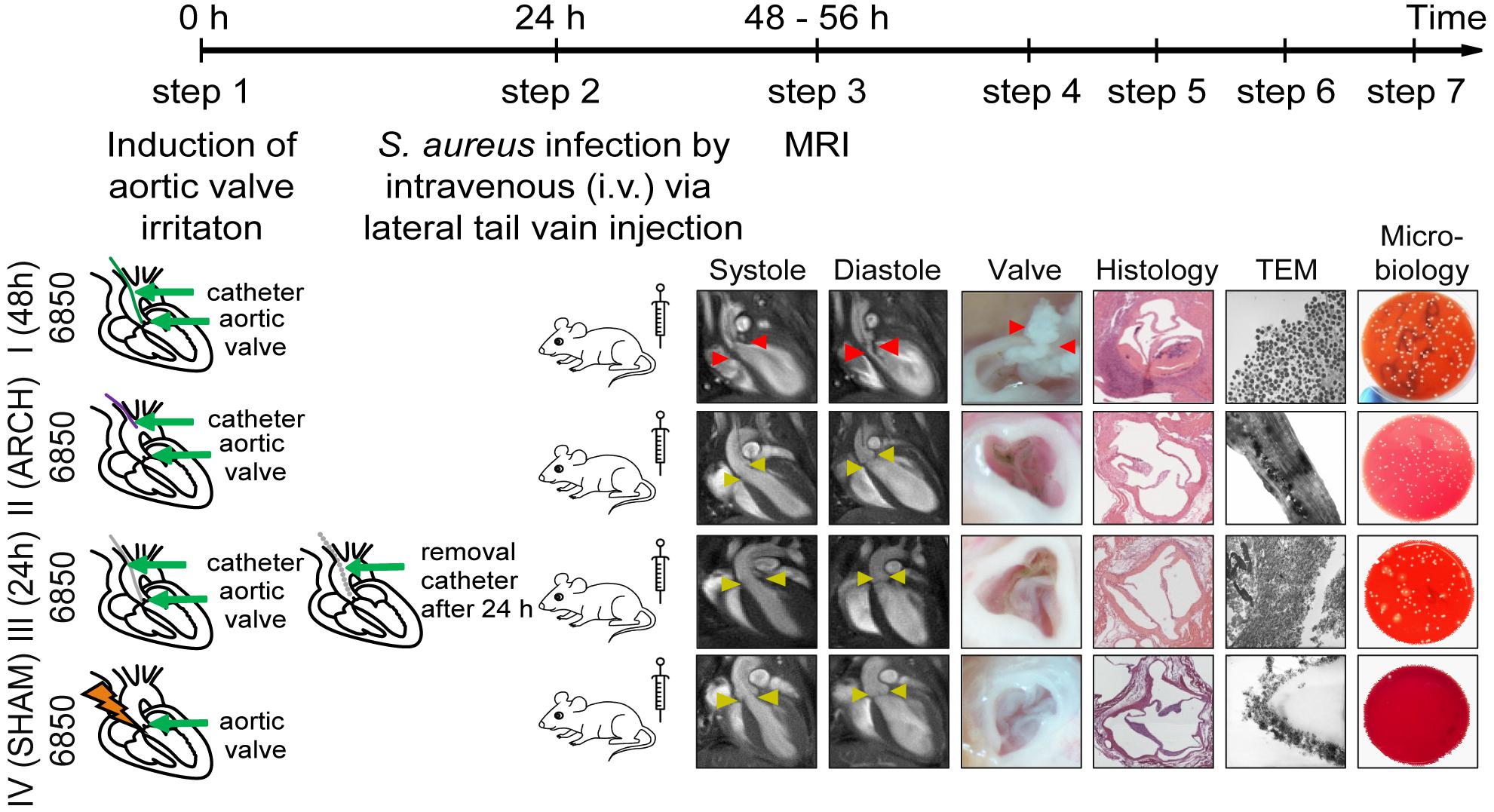Clinical Findings:
- In cattle, endocarditis most commonly occurs in right atrio-ventricular (tricuspid) valve.
- In horse, common site of predilection is aortic valve, then second site left atrio-ventricular valve and third site is right atrio-ventricular valve.
- Most important finding is murmur on auscultation of heart or thrill on palpation of cardiac area.
- Constant moderate, fluctuating fever
- Peripheral lymphadenitis
- Pneumonia
- Arthritis, tenosynovitis
- Loss of condition, pale mucus membrane
- Increased heart rate
- It is one of cause of acute heart failure and sudden death in sows.
- Weakness, progressive loss of body weight

Laboratory Findings:
- Anemia and leukocytosis present at blood examination

Diagnosis:
- On basis of history and clinical findings
- On basis of laboratory findings
- Radiography and echocardiography of heart
- ECG findings: sinus tachycardia, decreased amplitude of QRS complex
- PM findings: Cauliflower-like growth on valves; shrunken, distorted and thickened valves at edges
Differential Diagnosis:
- Pericarditis
- Brisket disease of cattle
- Cardiac lymphosarcoma
Treatment:
- Intravenous administration of high doses of specific antibiotics. Crystalline penicillin upto 20 times is indicated at 4-6 hours’ interval
- Supportive therapy should be given to correct anemia.
- Administration of iron injection to correct anaemia.
- High protein diet should be provided to animals to avoid fluid buildup.
- Vitamin C and folic acid are given as supplements for fastening healing process
- Continuous treatment for 4 months is required and it is uneconomic in food animals.
- Relapse of infection is common and treatment is expensive.